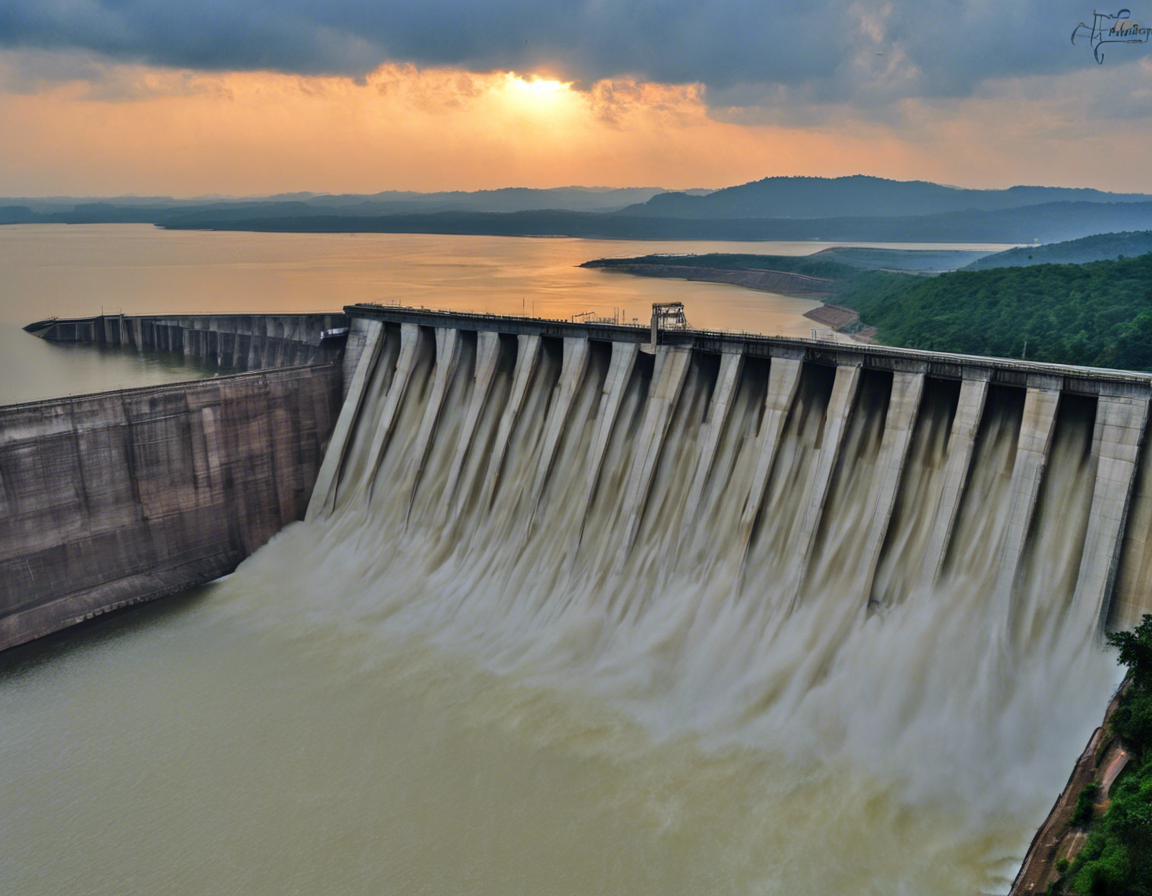Introduction
In the heart of India lies a structure of immense engineering prowess – the Hirakud Dam. This colossal dam not only stands as a symbol of human ingenuity but also plays a vital role in providing flood control, irrigation, and hydroelectric power generation to the region. Let us delve into the details of this marvel of modern engineering.
History and Significance
The Hirakud Dam, built across the Mahanadi River in the state of Odisha, was completed in 1953. Named after the nearby town of Hirakud, it is one of the earliest major multipurpose river valley projects in India. The primary objectives of the dam were to control floods in the region, facilitate irrigation for agriculture, and harness the power of the river for electricity generation.
Technical Details
The Hirakud Dam is a staggering 4.8 kilometers long, making it one of the longest dams in the world. It stands at an impressive height of 60.96 meters and has a storage capacity of over 4.7 billion cubic meters of water. The dam’s reservoir, known as Hirakud Reservoir, extends over an area of 746 square kilometers and has transformed the landscape of the region.
Flood Control
One of the primary functions of the Hirakud Dam is flood control. The dam plays a crucial role in mitigating the devastating effects of floods in the Mahanadi River basin. By regulating the flow of water during the monsoon season, the dam helps prevent widespread flooding in the surrounding areas, protecting lives and property.
Irrigation
The Hirakud Dam is equipped with an intricate network of canals that distribute water for irrigation purposes. The dam has been instrumental in transforming the region into a fertile agricultural hub. The canal network ensures that water reaches even the remotest fields, enabling farmers to cultivate crops throughout the year and enhancing agricultural productivity.
Hydroelectric Power Generation
In addition to flood control and irrigation, the Hirakud Dam also boasts a hydroelectric power plant with a capacity of 307.5 megawatts. The dam harnesses the power of the Mahanadi River to generate clean and renewable electricity, contributing to the energy needs of the region. The power plant plays a crucial role in meeting the electricity demands of both urban and rural areas.
Tourism and Recreation
Apart from its functional significance, the Hirakud Dam has also emerged as a popular tourist destination. The vast expanse of the reservoir offers opportunities for boating, fishing, and picnicking. The scenic beauty surrounding the dam, with lush greenery and panoramic views of the water, attracts visitors from far and wide. The dam has become a hub for recreational activities, offering a serene retreat amidst nature.
Environmental Impact
While the Hirakud Dam has brought about numerous benefits to the region, it has also raised concerns about its environmental impact. The alteration of the natural flow of the river, displacement of communities, and changes in the ecosystem have been subjects of debate. Efforts are being made to strike a balance between harnessing the river’s resources and preserving the environment for future generations.
Future Prospects
As India continues to grapple with water management challenges, the importance of dams like Hirakud will only grow. The dam serves as a model for sustainable water resource management, integrating flood control, irrigation, and power generation. With advancements in technology and increasing focus on sustainability, the Hirakud Dam is poised to play a crucial role in India’s development journey.
Conclusion
The Hirakud Dam stands as a testament to human innovation and perseverance. From controlling floods to supporting agriculture and generating electricity, the dam has been a lifeline for the region. As we look towards a future where water resource management is of paramount importance, the Hirakud Dam remains a shining example of how engineering marvels can transform the landscape and improve lives.
FAQs
Q: What is the purpose of the Hirakud Dam?
A: The Hirakud Dam serves multiple purposes, including flood control, irrigation for agriculture, and hydroelectric power generation.
Q: How long is the Hirakud Dam?
A: The Hirakud Dam is approximately 4.8 kilometers long, making it one of the longest dams in the world.
Q: What is the capacity of the Hirakud Reservoir?
A: The Hirakud Reservoir has a storage capacity of over 4.7 billion cubic meters of water.
Q: Does the Hirakud Dam have a hydroelectric power plant?
A: Yes, the dam has a hydroelectric power plant with a capacity of 307.5 megawatts.
Q: What recreational activities are available at the Hirakud Dam?
A: Visitors can enjoy boating, fishing, picnicking, and other recreational activities at the dam and its reservoir.
Q: How has the Hirakud Dam impacted the environment?
A: The dam has raised concerns about environmental impact, including changes in the ecosystem and displacement of communities.
Q: What role does the Hirakud Dam play in water management challenges in India?
A: The dam serves as a model for sustainable water resource management, addressing challenges related to floods, irrigation, and power generation.
Q: Is the Hirakud Dam a popular tourist destination?
A: Yes, the dam has emerged as a popular tourist spot, attracting visitors with its scenic beauty and recreational activities.
Q: What are the future prospects for the Hirakud Dam?
A: With advancements in technology and a focus on sustainability, the dam is expected to continue playing a key role in India’s water management and development efforts.
